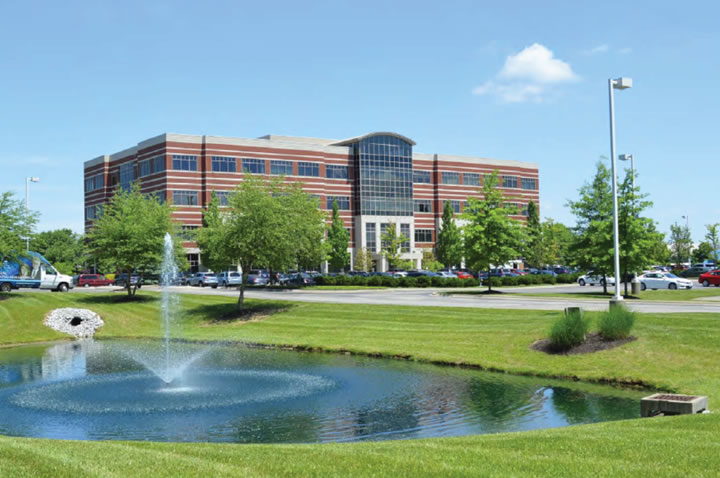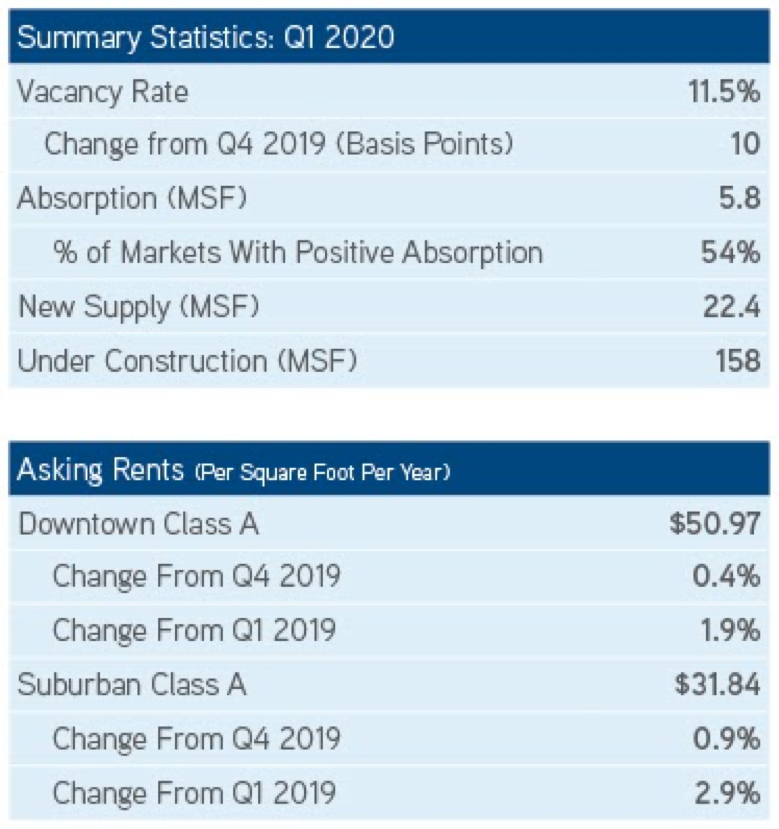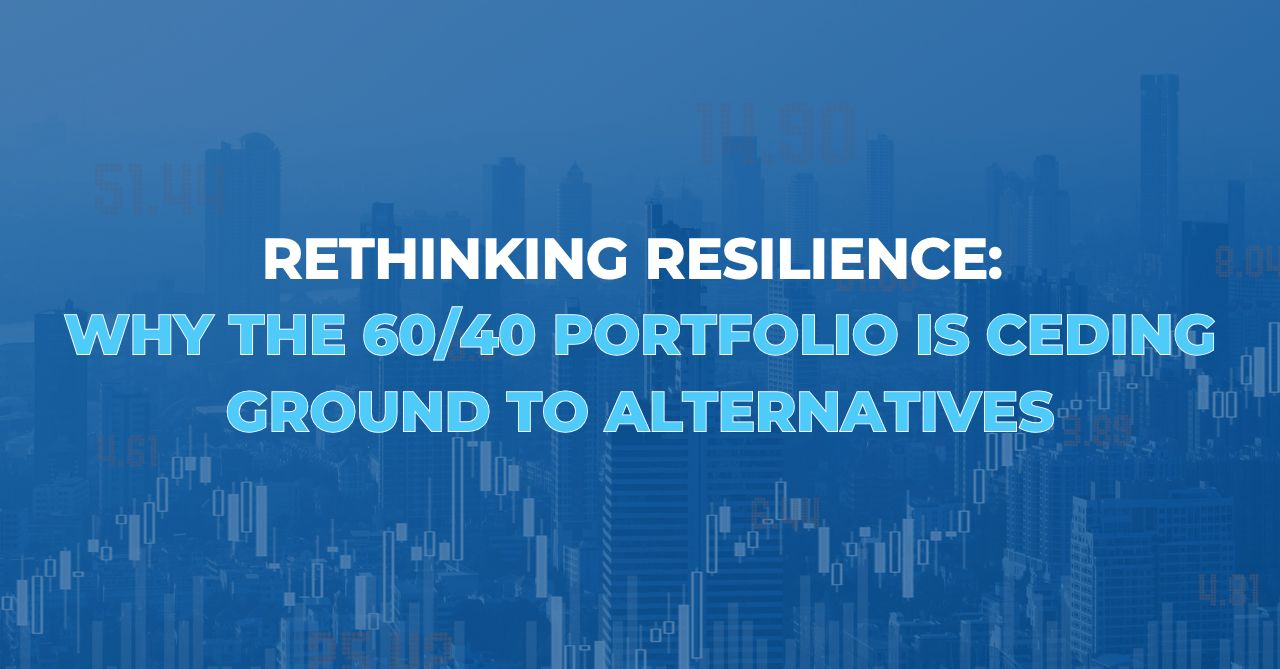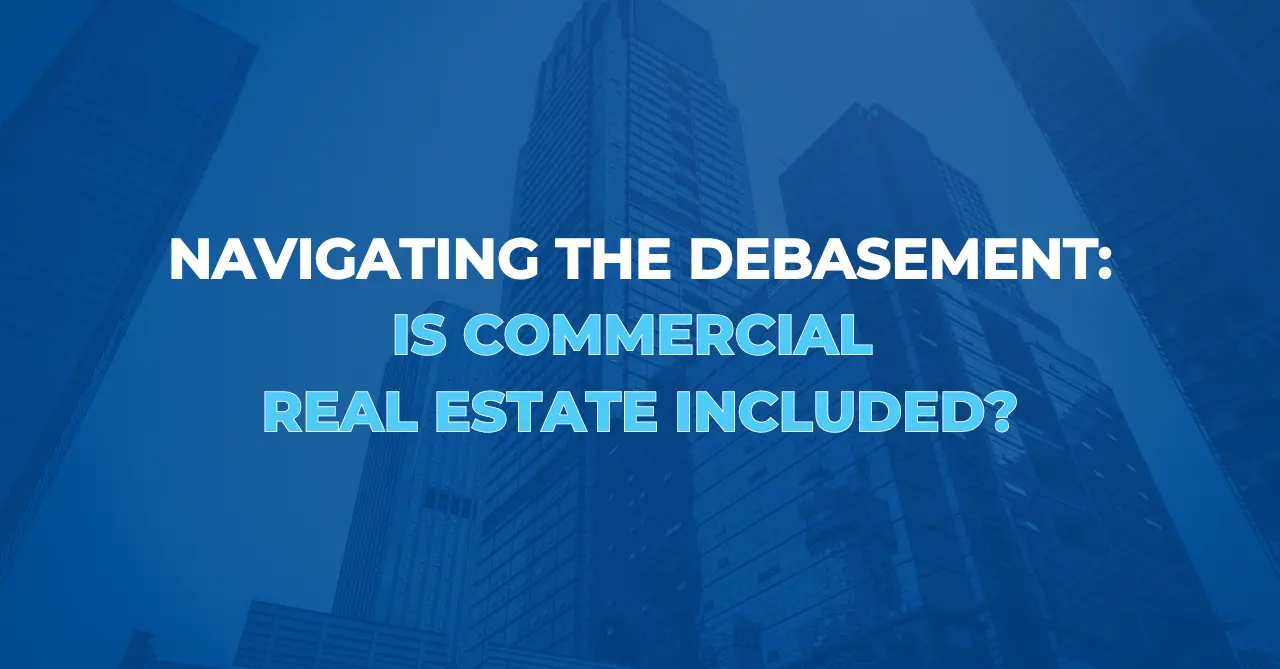A Breakdown of the U.S. Office Market in Q1 2020
Despondent would be one way to describe the U.S. Office Market in Q1 2020. An unprecedented economic expansion of more than a decade was met by an equally unprecedented economic, social and public health phenomenon in the form of COVID-19. That is to say, the leasing environment in January was much different from what we see today.
A slight uptick was seen in vacancy, while absorption fell, and rents returned negligible gains. Office markets have remained relatively resilient to the most damaging economic impacts of COVID-19 thus far, but there were signs fundamentals were worsening in March. Leasing activity declined by 20% in Q1 and a preponderance of it was in tenant renewals rather than new leases. The 20 basis points increase in office vacancy was gentle, but absorption was at its lowest level since 2013, as increase in sublease space has a growing presence in various markets. However, suburban markets continue to see the greatest share of capital being raised and placed.
Key Takeaways From Q1 2020:
1) Flight to quality – 7 million square feet of Class A space gains was countered by more than 1.1 million square feet of losses in the Class B and C segments.
2) Leasing dropped below 50 million square feet for the first time this cycle.
3) Q1 occupancy growth was minimal after a record 2019.
4) Asking rent growth of 0.6% was consistent with previous quarters.
5) NYC’s office leasing activity was at a 25-year low (4.5 million square feet).

Vacancy
- The U.S. office vacancy rate increased marginally in Q1 2020, rising by 10 basis points to 11.5%. Despite this increase, vacancy has now been below its historic average for 21 consecutive quarters.
- Central business district (CBD) vacancy rates rose by 20 basis points in Q1 2020 to 10.2%, while suburban levels held firm at 12.2%.
- Major and mid-tier metros with the lowest vacancy rates include Nashville, Orlando, Portland, Raleigh-Durham and the San Francisco Bay Area.
Rents
- Average Class A CBD office asking rates grew by 0.4% in Q1 2020 to $50.95 per square foot, while suburban rents rose by 0.9% to $31.85 per square foot.
- Over the past 12 months, 13 CBD markets saw Class A asking rents rise by more than 5%, led by Atlanta, Detroit and Palm Beach.
- In the suburbs, 11 markets saw Class A rents rise by more than 5% over the same time period. Charlotte, Minneapolis and Salt Lake City were among the leaders.
Absorption
- U.S. office absorption fell in Q1 2020 to 5.8 million square feet, down from 12.3 million square feet in the prior quarter
- CBD markets accounted for negative 1.3 million square feet of the Q1 2020 net absorption total, with 7.1 million square feet occurring in the suburbs.
- Markets with strong positive absorption in Q1 2020 included Atlanta, Orlando and Seattle.

Suburban Markets
- Average capitalization rates (cap rates) stand at 6.5%, 10 basis points lower than one year ago.
- CBD cap rates fell by 10 basis points over the same time period to 5.3%, while suburban cap rates fell by 20 basis points to 6.7%.
- Sales volume in Q1 2020 totaled $29.4 billion, up by 3.6% on a year-over-year basis.
- Investors continue to favor suburban assets, placing $17.4 billion in the first quarter, compared with $11.9 billion in CBD locations.
Looking ahead, the COVID-19 pandemic has created a climate of uncertainty. At the moment, the dispersion of outcomes in commercial real estate is so broad, investors have to be paid a premium to take risk. Coupled with a lending community that has been completely put on pause in an environment where transactions simply aren’t taking place. Value creation occurs in real estate when there is compression between occupancy and supply. If smaller tenants cannot withstand the downward pressure, it may force occupancy up which ultimately impacts landlords ability to increase rent – thus muting value creation over a period of time. In the immediate, decision making will largely remain on hold, impacting both leasing and acquisition/disposition activity.
Our Takeaways
While it’s too early to get opportunistic, at Excelsior Capital we believe our portfolio is well positioned to withstand this economic uncertainty. Of equal importance, it reaffirms our investment strategy of targeting secondary, growth cities located in the southeast and midwest. While census data has shown people already fleeing the Top 10 Gateway Markets for downsized Metropolitan Statistical Areas (MSAs) over the last four years prior to this pandemic, our contention is COVID-19 will accelerate this process, ushering in the resurgence of the suburban office market. Cities such as Nashville, Kansas City, Cincinnati, Raleigh-Durham and Omaha could wind up being the beneficiaries if corporations look to move their labor pools to higher value locations where they can have more space and increased control over their environment. The reality of the situation is straightforward: in addition to more space, higher value cities provide corporate users cheaper rents and the optionality to pay their employees less.
Fear has set in, and we anticipate this to be a deeper but quicker recession than 2008. However, when there is some clarity in the market, we are well positioned to pursue timely opportunities in tactical fashion. Even with everybody on the sidelines, we’ve continued to proactively communicate with our investors, lenders, operators and tenants. In this environment where it’s impossible to transact, we’ve taken the opportunity to increase our educational efforts in hopes to be a resource for our investors and broader audience alike. In the meantime, we will continue to stay apprised of opportunities, deal-flow, best practices and thoughtful insight. We remain confident that Excelsior Capital will continue to grow it’s footprint in 2020.
Previous Articles
Excelsior Capital
A real estate private equity firm that owns and operates high quality multi-tenant office assets in emerging secondary markets.
Interested in learning more about Excelsior's investment opportunities?
Disclaimer
Under no circumstances should any information presented on this website be construed as an offer to sell, or solicitation of an offer to purchase any securities or other investments. This website does not contain the information that an investor should consider or evaluate to make a potential investment. Other materials related to investments in entities managed by Excelsior Capital are not available to the general public.












